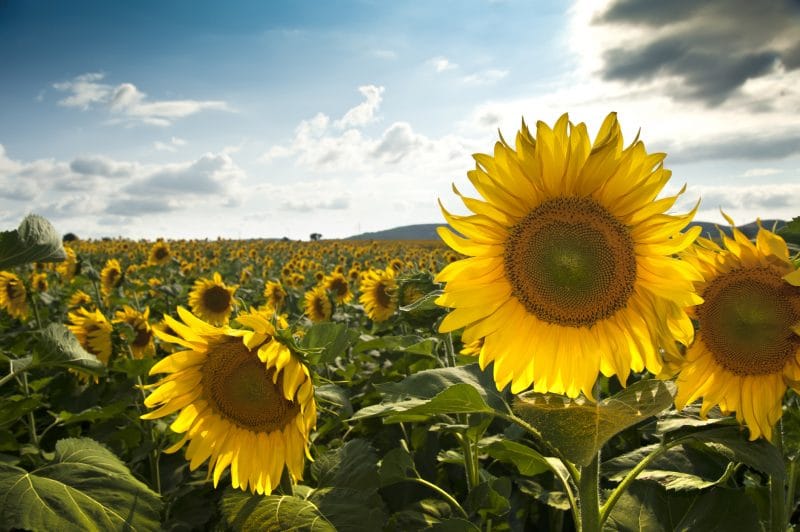Plant biologists from the University of California, Davis have discovered that an internal circadian clock controls sunflowers’ distinctive concentric rings of flowering that maximize visits from pollinators, according to a release.
A sunflower head is composed of hundreds of tiny florets, with the youngest florets at the core of the flower face and more mature florets at the edges, creating a distinctive spiral pattern that begins in the center and expands to the edge.
Individual florets bloom within a few days. On the first day, the floret opens the male section of the flower and offers pollen. On the second day, a female stigma will unfold to take in the pollen. During this process, florets coordinate, allowing the concentric rings to open from the edge and move inwards on successive days — yet a ring of female flowers remains outside the males that bear the pollen at all times, explained the release.
Typically, pollinating bees land on ray petals surrounding the sunflower head and then proceed to walk towards the center, shared Stacey Harmer, senior author and professor of plant biology at the UC Davis College of Biological Sciences. This means that the bees pick up pollen after walking over the female florets and carry it to another flower head.
Harmer and Carine Marshall, postdoctoral researcher, set out to learn how florets’ spiral pattern transforms into concentric rings of flowering armed with Harmers’ lab’s previous findings that circadian rhythms control the tracking of sun throughout the day for growing sunflowers.
A plant or animal’s internal circadian clock runs on a 24-hour cycle, allowing various genes to activate at varying times throughout the day. Natural day/night cycles ensure the internal clock can remain synchronized to actual daytime. If the length of daylight or darkness is altered, the clock could reset. For sunflowers, continuous light will disrupt the clock completely.
In order to determine what causes the spiral pattern to change into concentric rings, researchers recorded time-lapse videos of sunflowers as they grew in varying light/dark or temperature conditions. The team discovered that the plant’s circadian clock manages the opening of florets. When the clock was disturbed by plants grown in continuous light, the florets would not open in concentric rings. Instead, they opened solely by age, beginning at the edge and moving towards the center, exhibiting a continuous gradient. Researchers also found that plants grown with a disrupted clock attracted fewer pollinators than average sunflowers when moved outside.
“We think that being able to coordinate in this way makes them a better target for bees,” said Harmer. “It’s a strategy to attract as many insects as possible.”
The efficiency of pollination is becoming increasingly more important as farmers adapt to climate change, believes Harmer. The knowledge of how the circadian clock and environment impact flowering can aid breeders in the development of cultivars that flower during optimal times throughout the day, promoting pollination.












